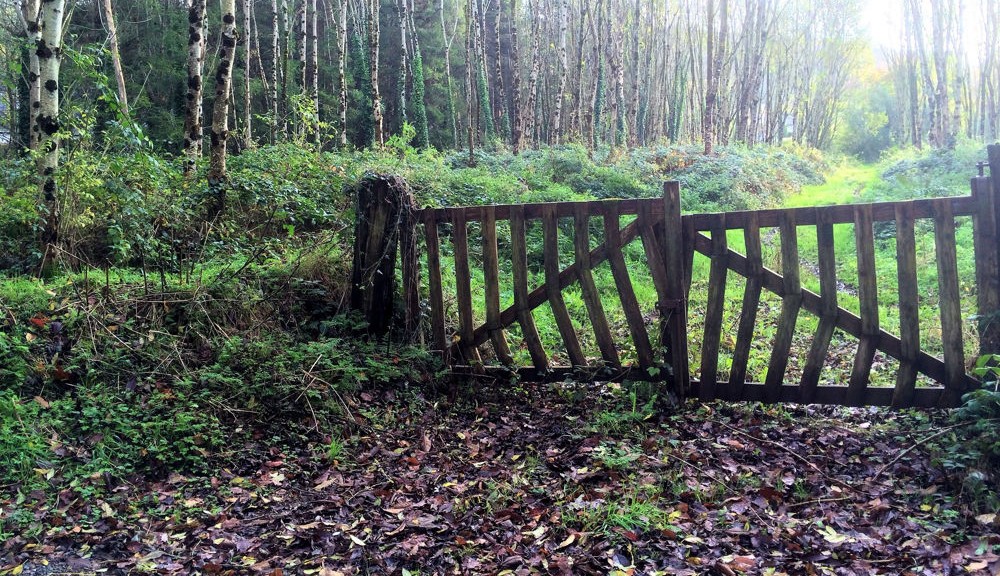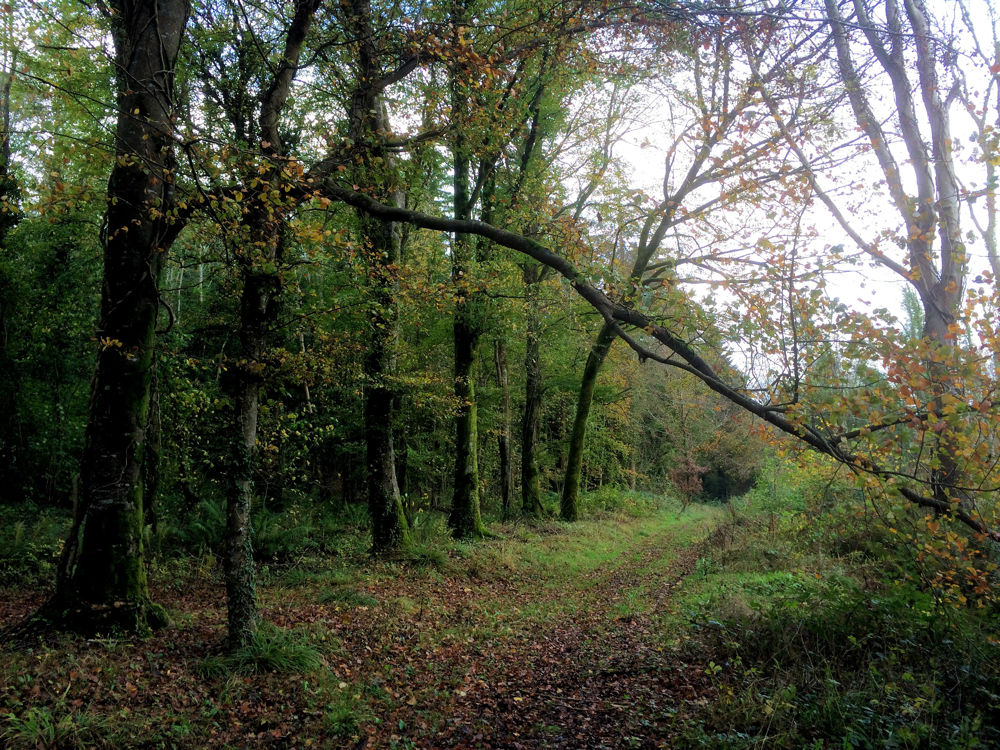 Hidden away between the small villages of Kilmaganny and Hugginstown, at Aghaviller in Kilkenny, is a wonderful local woodland amenity. Castlemorris Wood forms part of the 2,000ha of woodland owned and managed by Coillte in the locality. It once formed the estate of Castlemorris House, one of the largest houses in the country, but was razed to the ground in 1978. All that remains now are some remnants of the stable yard and a curious assemblage of trees.
Hidden away between the small villages of Kilmaganny and Hugginstown, at Aghaviller in Kilkenny, is a wonderful local woodland amenity. Castlemorris Wood forms part of the 2,000ha of woodland owned and managed by Coillte in the locality. It once formed the estate of Castlemorris House, one of the largest houses in the country, but was razed to the ground in 1978. All that remains now are some remnants of the stable yard and a curious assemblage of trees.
The woodland probably doesn’t support anything very exciting in terms of rare species (but I don’t actually know that for a fact), yet that is not to diminish its biodiversity value. The woodland has a nice mixture of deciduous and coniferous woodland. But the woodland does have the appearance of not being aggressively managed for its commercial value (which is a good thing!); the scrubby undergrowth and plenty of dead wood giving it a ‘natural’ appearance in places. The network of woodland paths and narrow tracks that weave their way through the estate provide a very pleasant walk and are well used by locals. A 7 km loop walk around the wood is one of the routes promoted as part of the the Trail Kilkenny initiative.
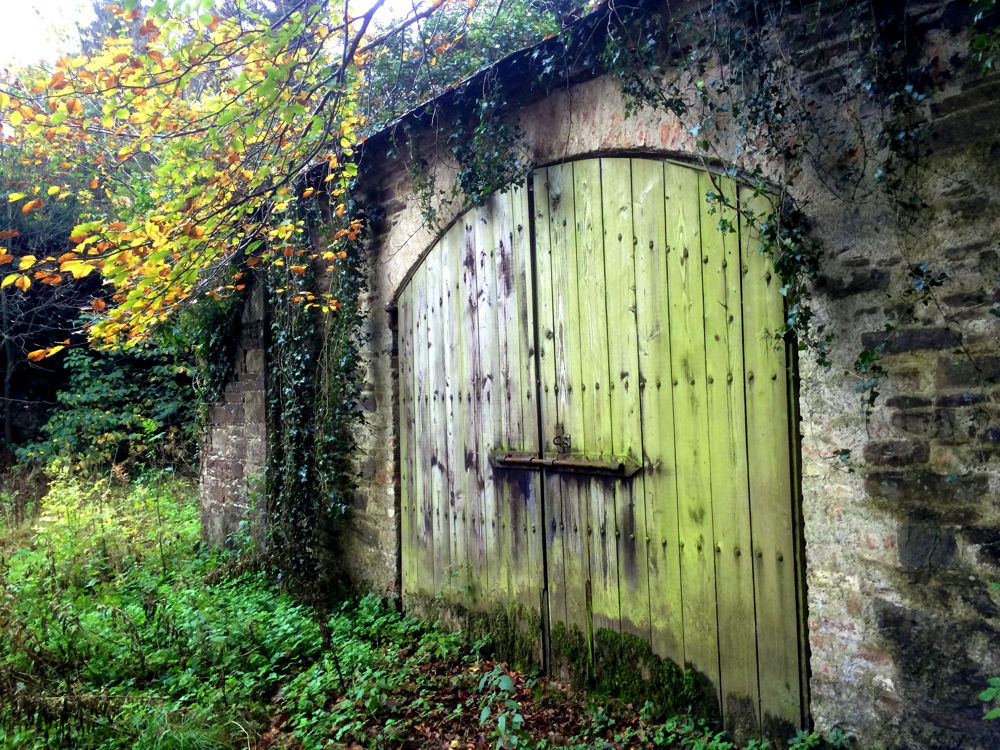
But the naturalness of the wood is deceptive for much of the estate is planted with beech, a species which is not native in the true sense of the word, as it was introduced to Ireland sometime in the last 1,000 years. There are mixed opinions on the biodiversity value of the ‘non-native’ beech, but for me this is an entirely esoteric debate for it is now naturalised over much of the country. And the patches of woodland that remain in Kilkenny add important diversity to the farmed landscape dominated by intensively managed grassland and cereal fields.
Castlemorris Woods looks really beautiful with the autumnal colours. It has been a particularly good beech mast year, with mast carpeting the woodland floor. Currently the mast is being devoured by woodpigeon, but will become increasingly more important for finches as the winter progresses. Perhaps it will attract in brambling, the winter relative of the chaffinch that arrives to Ireland from Scandanavia and Siberia each year. The woods also have many majestic sweet chestnut trees, and these too have produced a bountiful harvest this year.
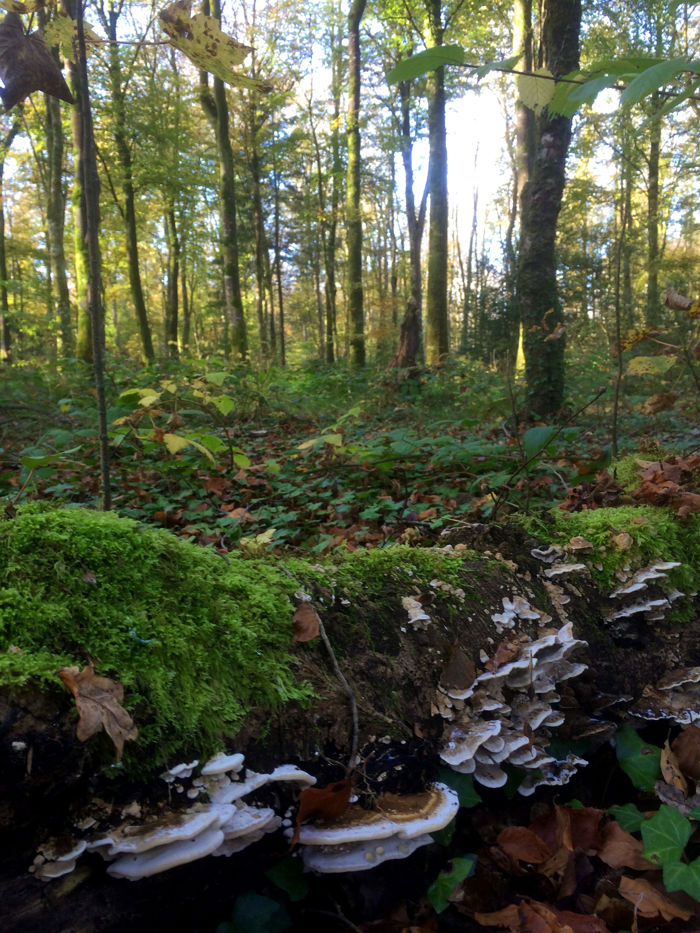
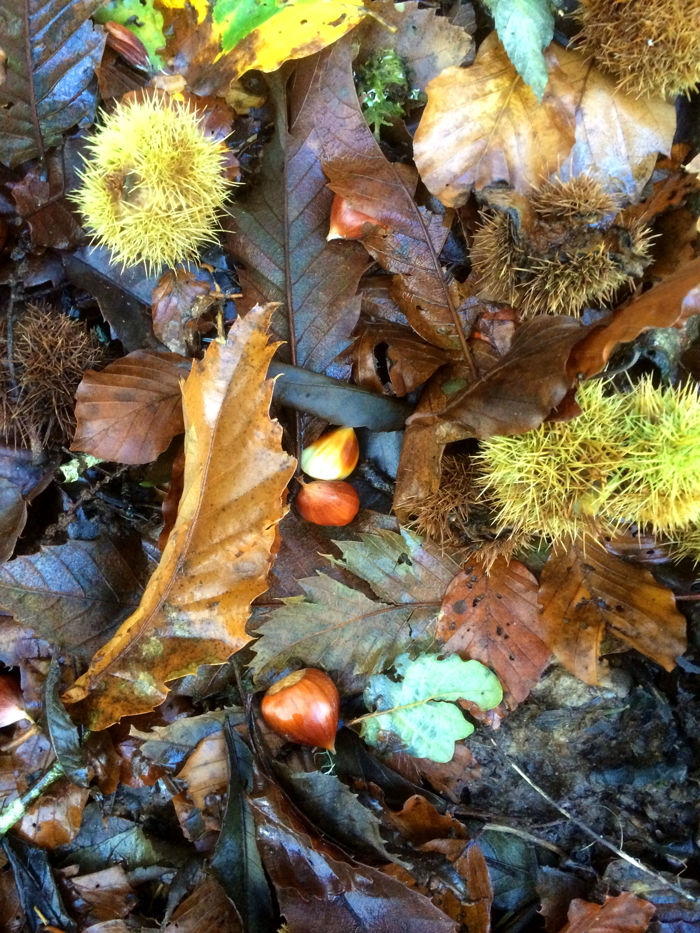
Now is the time to explore the many different species of fungi that grow in abundance on the woodland floor, and sprout from rotting timber. Even up to the end of October, shieldbugs, butterflies and hoverflies were to be seen basking in the late autumn sunshine.
But the woods hold something of interest at all times of the year. For me, the chance of seeing a red squirrel is always an attraction as there is still a healthy population here. But the mammal population of Castlemorris Wood is changing. Recent years has seen the arrival of the beautifully elusive pine marten, a species which fortunately is expanding its range greatly in Ireland. It is thought that this expansion is due to the increased forest cover in Ireland, but be that as it may, it can now be seen in farmland away well away from woodland. And the pine marten expansion has coincided with the contraction in range of the invasive grey squirrel who seems to be moving out of areas when pine marten arrive. As pine marten like to eat grey squirrels, it is understandable that grey squirrels tend to find their environment less desirable with their new neighbours. But the theory is that red squirrels can live in harmony with pine martens as they are lighter and, by moving to the extremities of branches, can keep out of reach of the pine marten. Hence, it seems that the advance of the pine marten has benefited the red squirrel, to the detriment of its larger and brasher American relation. And pine marten droppings (or scats) can be seen in places at Castlemorris Woods, so the prospects for our native red squirrel looks quite good here.
And in the undergrowth things are changing too. Another non-native mammal, the bank vole, was first recorded near Listowel, Co. Kerry in 1964 and is expanding its range in a north-easterly direction. It now is found over almost half the country and has made it as far as Kilkenny city. Castlemorris Wood has been colonised by the bank vole in recent years and it is known that wood mice are being replaced by the bank vole where they invade. What impact this replacement is having on the ecology, however, is still unknown.
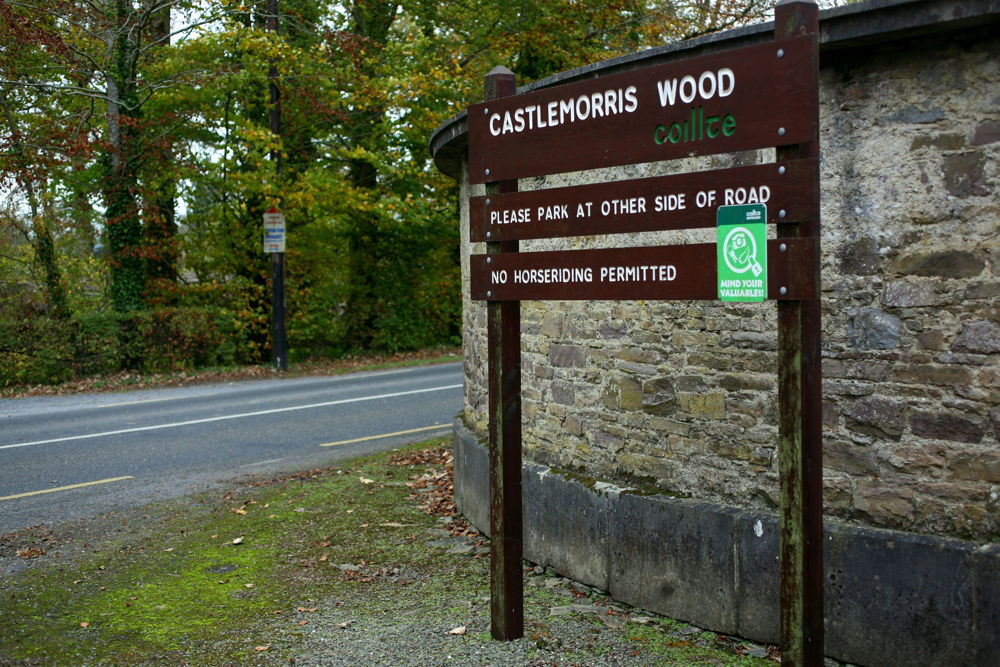
Castlemorris Wood is a wonderful local amenity and there are always people out walking and enjoying the site, no matter the weather. Coillte manages woodland sites like Castlemorris Wood all across the country and it is easy to take these local amenities for granted. It is only when amenities like this are threatened that their real value is appreciated. A short time ago there was a very real possibility that Ireland’s forest resource was to be priviatised and the open forest policy adopted by Coillte would have been placed in jeopardy. Fortunately this did not come to pass, and hopefully it never will. Sites like Castlemorris Wood are valuable natural assets, and Coillte does a good job at managing them on our behalf. Long may it continue.

